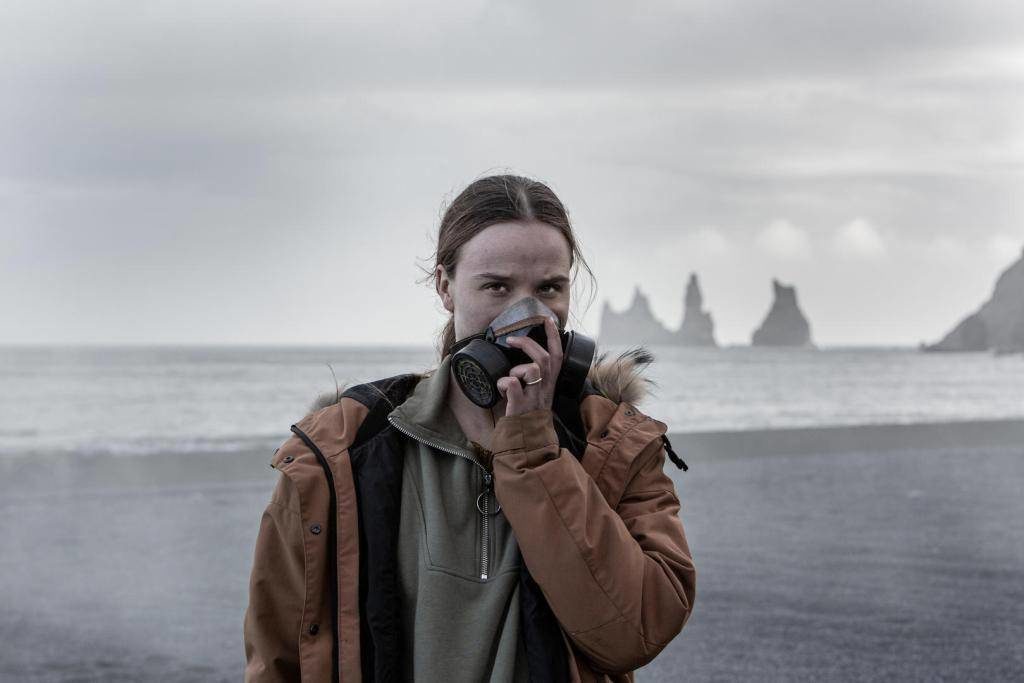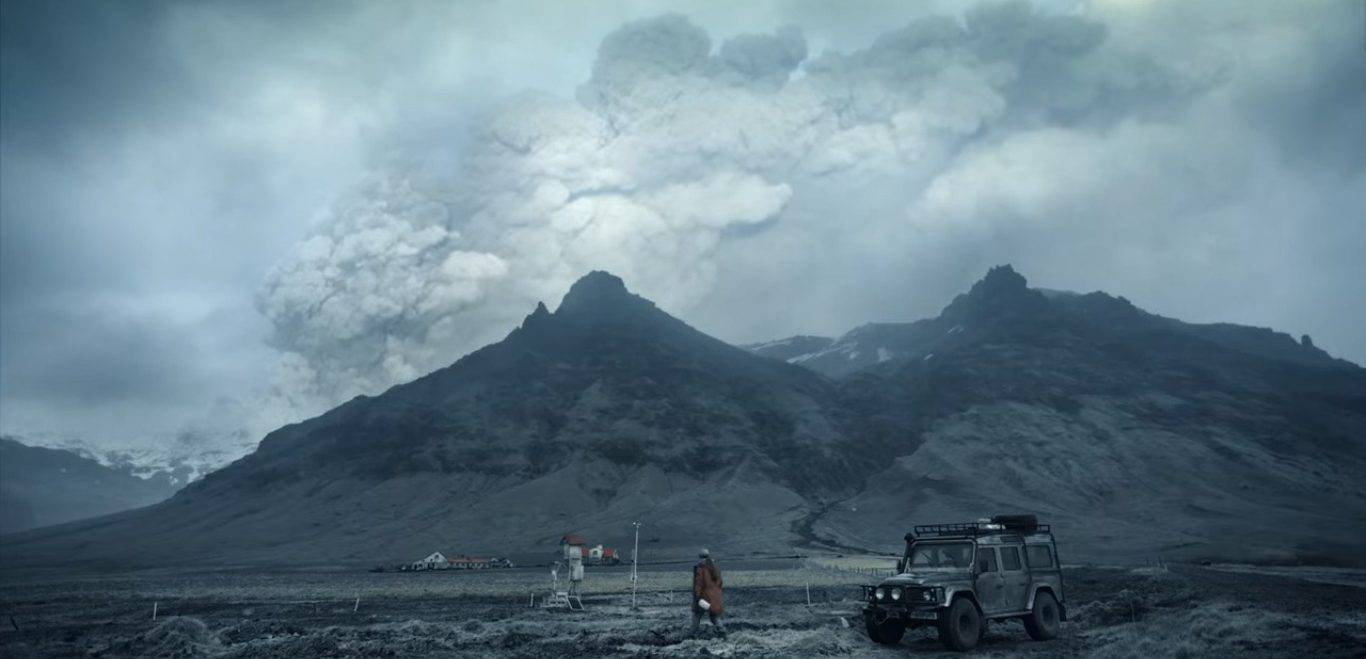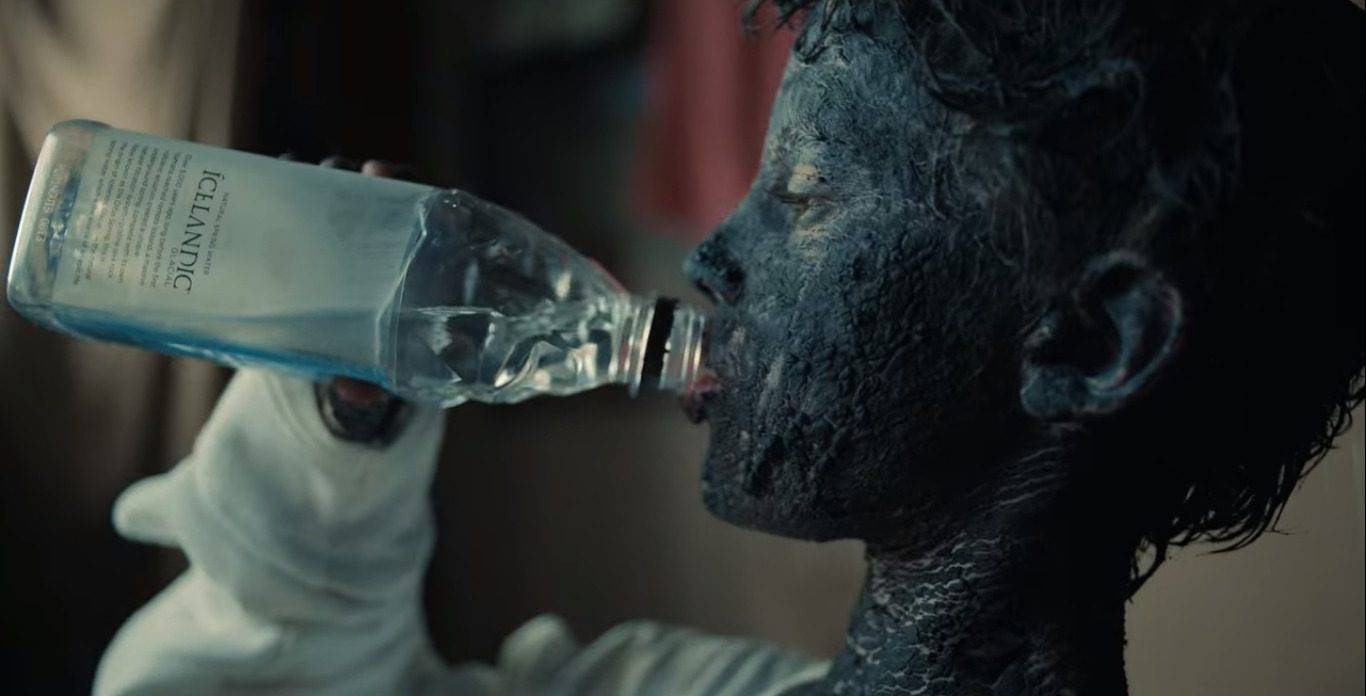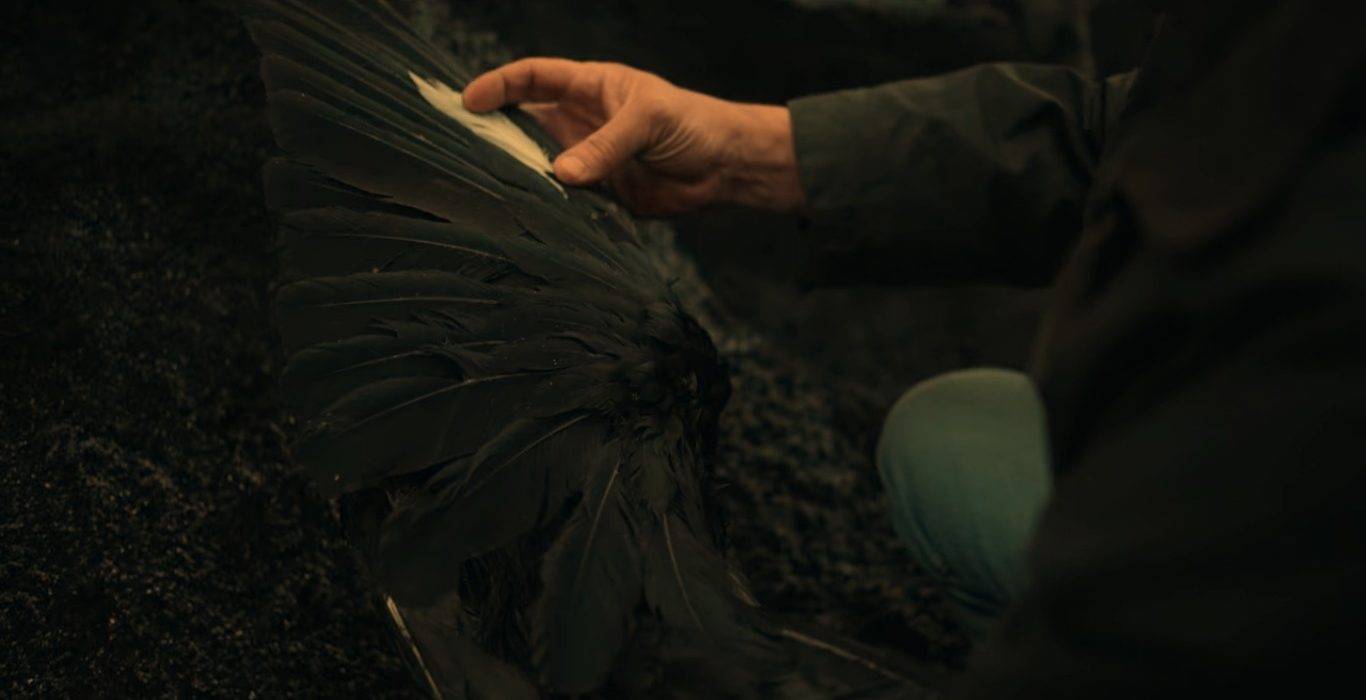‘Katla’ is a slow-burning mystery science fiction series set in a small Icelandic hamlet beneath an active volcano. Only a few stubborn townspeople and rescue personnel, as well as a team of researchers, remain in the ash-covered ghost town after the majority of the citizens have departed. The abrupt reappearance of individuals assumed to be dead leaves the town and its citizens in a state of confusion, and what follows is an intricate examination of how each of them reacts with the unexpected reappearance of a loved one.
The protagonists’ search for answers takes them deep beneath their village and into their past. Some even believe that the unusual appearances are a sign of tragic folklore coming true. If the mind-boggling finale of ‘Katla’ season 1 left you with a lot of questions, this is the place to look for answers. WARNING: SPOILERS AHEAD.
Katla Season 1 Recap
The story begins one year after the volcano Katla began erupting and has shown no signs of slowing down since then. Except for a few residents and rescue personnel, a lone police officer named Gisli, and a team of researchers, the small town of Vik is mostly deserted and ash-covered. The majority of the town’s people have relocated to Reykjavik, and those who remain are suffering from respiratory problems as a result of the frequent ash storms.
Grima is a rescue worker who is dispatched when a mysterious woman covered in black volcanic ash is discovered at a research outpost near the active volcano’s rushing glacier. It is determined that the woman looks identical to a woman named Gunhild who worked in the local hotel 20 years ago. The genuine Gunhild, on the other hand, appears at the hospital where the ash-Gunhild is being treated, leading to suspicions that the latter is an imposter.
When ash-Gunhild claims to be pregnant with Grima’s father’s (Thor) kid, things get even more confusing. Soon later, Grima and her father are astounded to see Grima’s sister Asa, who had been missing for two years near the glacier and was presumed dead. ash-Asa, like ash-Gunhild, has no knowledge of where she was before being discovered or how she became covered in black ash.
Mikael, the little son of Darri, one of the researchers residing at the outpost near the glacier, is the second ash-covered individual to strangely arrive. Darri is immediately suspicious after seeing his son’s death in a vehicle accident three years prior. He confines the little child in a shed. When his wife Rakel learns about it, she tries to save ash-Mikael from Darri and flees with him. She quickly understands, however, that the youngster she believes is her son has sinister intentions, including murdering her husband, and she abandons him. Meanwhile, Grima discovers a girl covered in black ash who claims to be Grima while inspecting the research station for activity.
Katla Season 1 Ending: Which Grima is Still Alive?
Grima, ever practical, gently inquires about her memories with her “ash” version, attempting to discover the source of the odd humanoids. While the rest of the community seems relieved to have Asa back, and even Thor has begun to accept ash-Gunhild as the mother of his child, Grima persists in trying to persuade people that they are imposters. Darri and his wife Rakel, whose fake son has subsequently murdered an elderly couple, are her final allies.
Darri takes rock samples from beneath the glacier with Grima’s help and discovers a meteor with peculiar life-giving characteristics buried there. He hypothesizes that the meteor is to blame for the “ash” doppelgangers, and after concluding that ash-Mikael is not his son, he drowns him in the sea. Grima tells ash-Asa that she is not her sister, whose body has now been discovered, and then watches as Asa commits herself by walking into the sea.
After that, she returns home and confronts ash-Grima. They eventually settle the matter of who gets to live by playing a game of Russian Roulette in which one of them wins. Grima is shown playing the piano in the last scenes, flanked by her husband and father. A montage of stone humanoid silhouettes deep underground and a fleeting view of a hazy horizon beginning to fill up with dark, ash-covered individuals heading towards the settlement are shown just before the credits.
The season finale’s culmination – a dramatic game of Russian roulette with the two “Grimas” seated side by side, clothed identically — left us wondering who will commit suicide. The actual Grima is seated on the right in a brown top, while ash-Grima is seated on the left in a blue top. Unless you count the clicks of the gun’s empty barrel whenever the trigger is pushed, it’s difficult to tell which one shoots herself in the head.
The actual Grima is the first to fire, and he does so on an empty chamber. After that, Ash-Grima raises the gun to her head and pulls the trigger, revealing an empty bullet chamber. The game continues until the actual Grima survives the fifth and final empty chamber, at which point ash-Grima takes the final, deadly shot. As a result, only the genuine Grima survives.
ALSO READ : 28 Best Thriller Movies On Netflix Right Now
Are the Folktales Coming True?
The superstitious proprietor of the Vik Hotel tells several folktales about weird incidents that have occurred every time the volcano Katla erupted over the years. The first folktale, set in the year 1311, tells of a little girl and her dog who go missing and are recovered alive and well many months later, having miraculously survived the terrible winter. The youngster is referred to as a “changeling” by the locals, as an offspring of the scary “hidden people,” who appear to be supernatural entities.
The second folk tale takes place during the 1625 eruption of Katla, when a mysterious youngster returns after being abandoned by his mother and murders her. Both of these folktales seem frighteningly similar to what is going on in the village of Vik, with people appearing who are assumed to be dead. Mikael, who likewise has violent proclivities, is abandoned by his “mother,” Rakel, in the story about the little boy abandoned by his mother. As a result, the folktales appear to be coming true.
This is due to the fact that the meteor, which has been buried behind the glacier for over two millennia, is what inspired the folk legends in the first place due to its strange life-giving properties. The meteor is also responsible for the bizarre happenings witnessed at Vik during the present eruption of Katla, demonstrating true folklore in the making. The meteor’s unearthly properties are causing these occurrences.
What is the Meteor Doing?
According to scientist Darri’s theory, the meteor is collecting the most severe emotional sentiments of separation felt by those closest to the glacier and recreating the persons who are being missed. After their untimely deaths, Mikael and Asa were both dearly lamented by their families, while Gunhild was missed by Thor. Grima’s husband Kjartan missed his wife owing to her continual preoccupation with her sister, which led to the creation of Grima’s “ash” version, despite the fact that she was still alive.
The humanoids formed by the meteor are not perfect duplicates of those they resemble, but rather are shaped by people’s perceptions of them. This is why Darri accepts responsibility for his “ash” son’s dark, homicidal disposition, as he was conceived while Darri was contemplating his upcoming divorce and the “death” of his love.
It’s worth noting that, despite puzzling and at times taunting the villagers, most of the meteor’s humanoids also assist many of them in moving on from the deaths of their loved ones. The way Darri and his wife Rakel deal with their “ash” son pulls them closer together and also helps them make peace with their young son’s death exemplifies this. Grima and her father benefit from Ash-assistance Asa’s in moving on after Asa’s death.
Except for ash-Mikael, the “ash” humanoids are not too domineering or violent, and are even content to end their lives when they realize they have no further purpose, as ash-Asa and Grima’s “ash” doppelganger, who willingly shoots herself after losing a game of Russian Roulette, demonstrate. As a result, the meteor is generating entities that don’t appear to have any sinister underlying goal and are instead shaped by the town’s citizens’ beliefs. The meteor has generated many more humanoids, as we witness in the season 1 finale, and the ones we’ve seen are only the beginning.
What is the Significance of the Raven with a White Feather?
A raven with a white feather appears frequently, most notably near Thor, who seems to associate it with some significance. However, as we see him bury the bird and another one appears, we learn that there are several ravens, each with its own white feather. The raven appears to be the expression of the meteor’s ability (of producing living creatures) being translated to birds, though this has yet to be clarified.
Due to the rarity of a raven with a white feather, the meteor most likely spawned several ravens with white feathers to replace the ones Thor has been burying. The meteor resurrecting the raven is due to someone, most likely Thor, having strong feelings about it. It’s likely that he had a pet raven with a white feather at one point, and that it’s currently on his mind for some reason, forcing the meteor to reproduce it.








